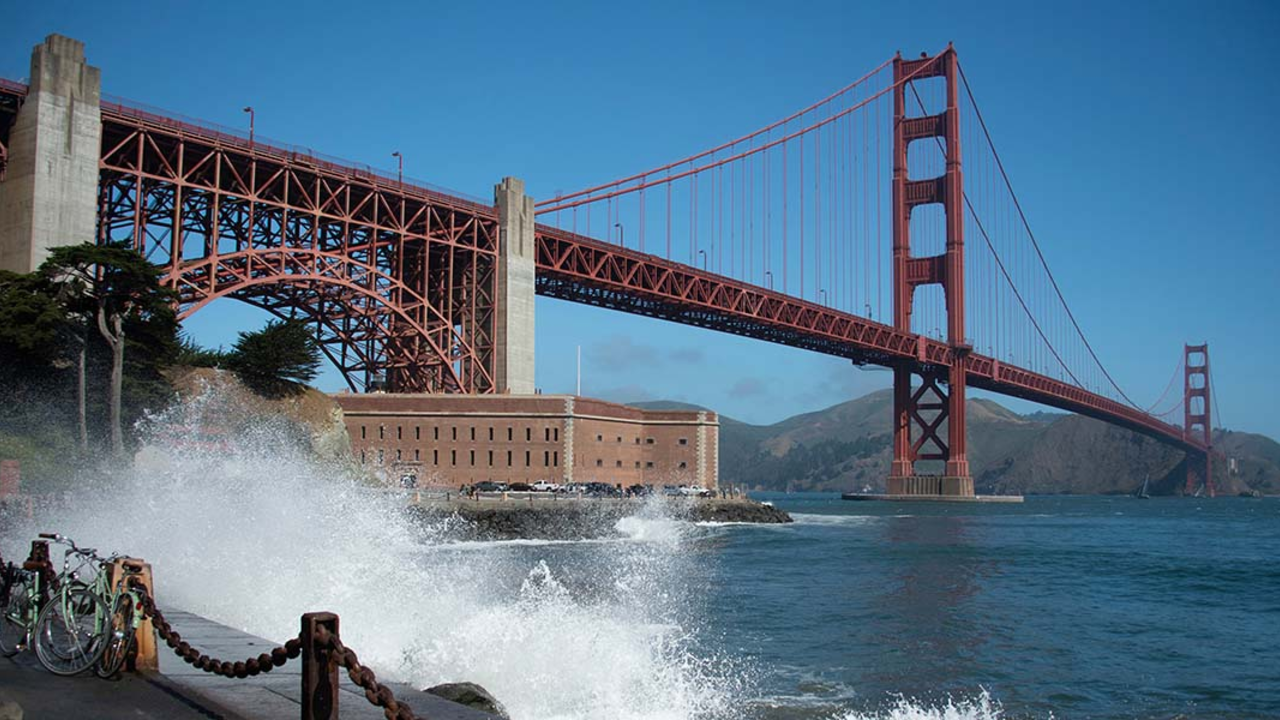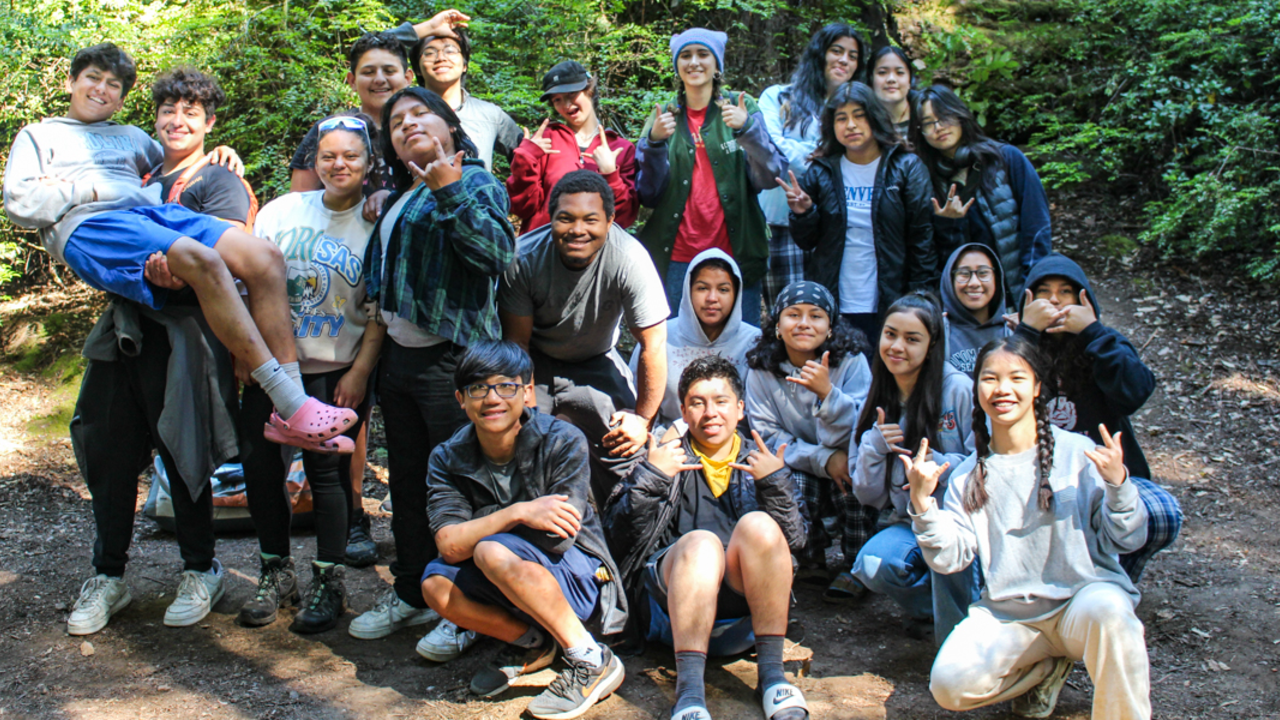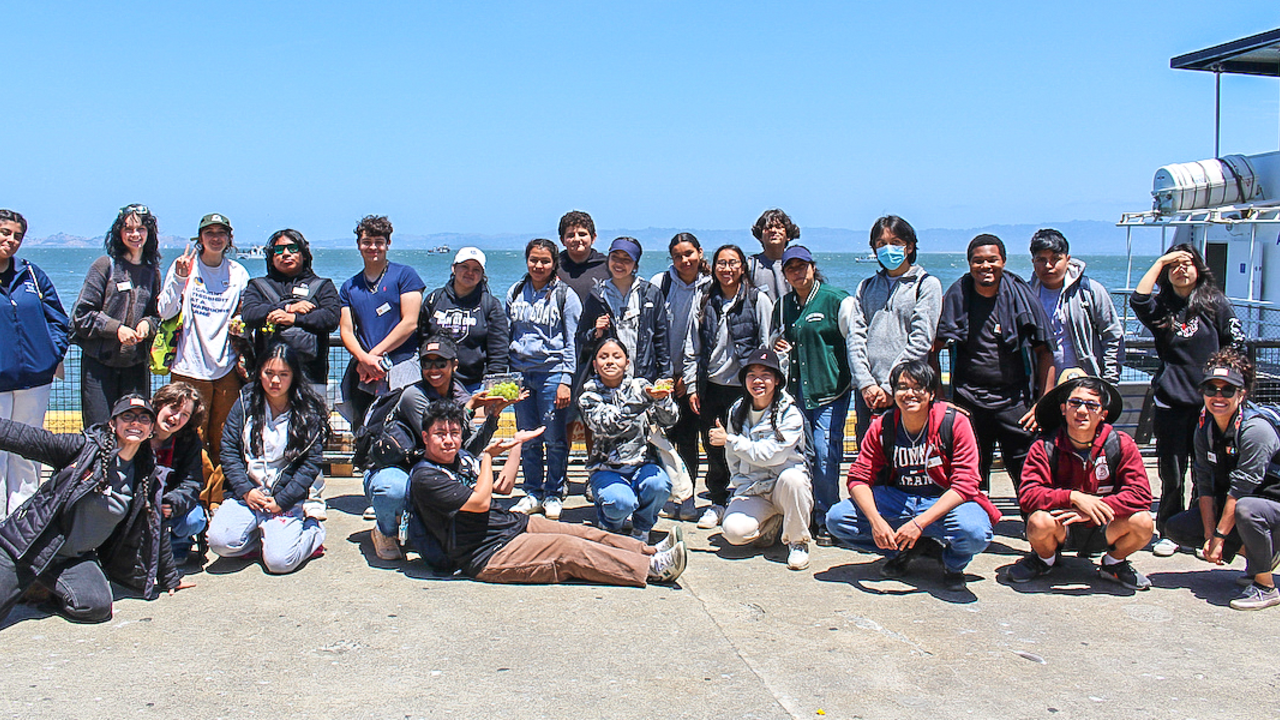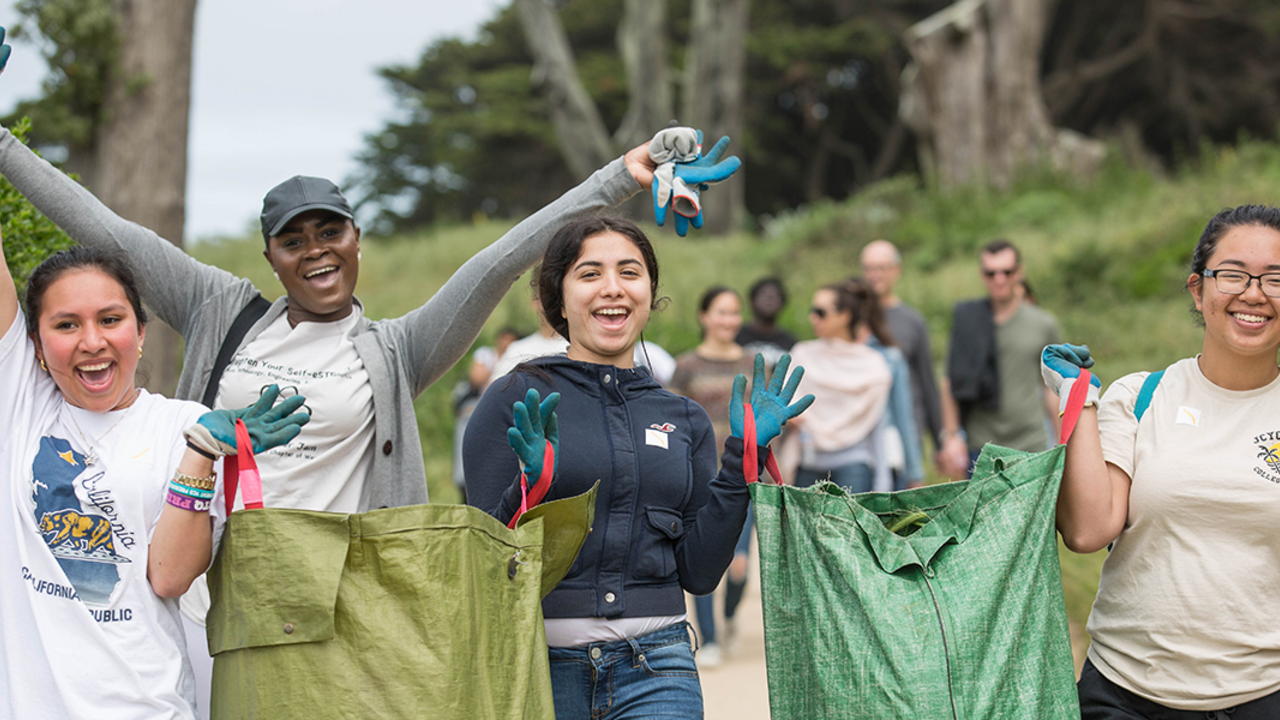Just the essentials: How the Alcatraz gardens grow
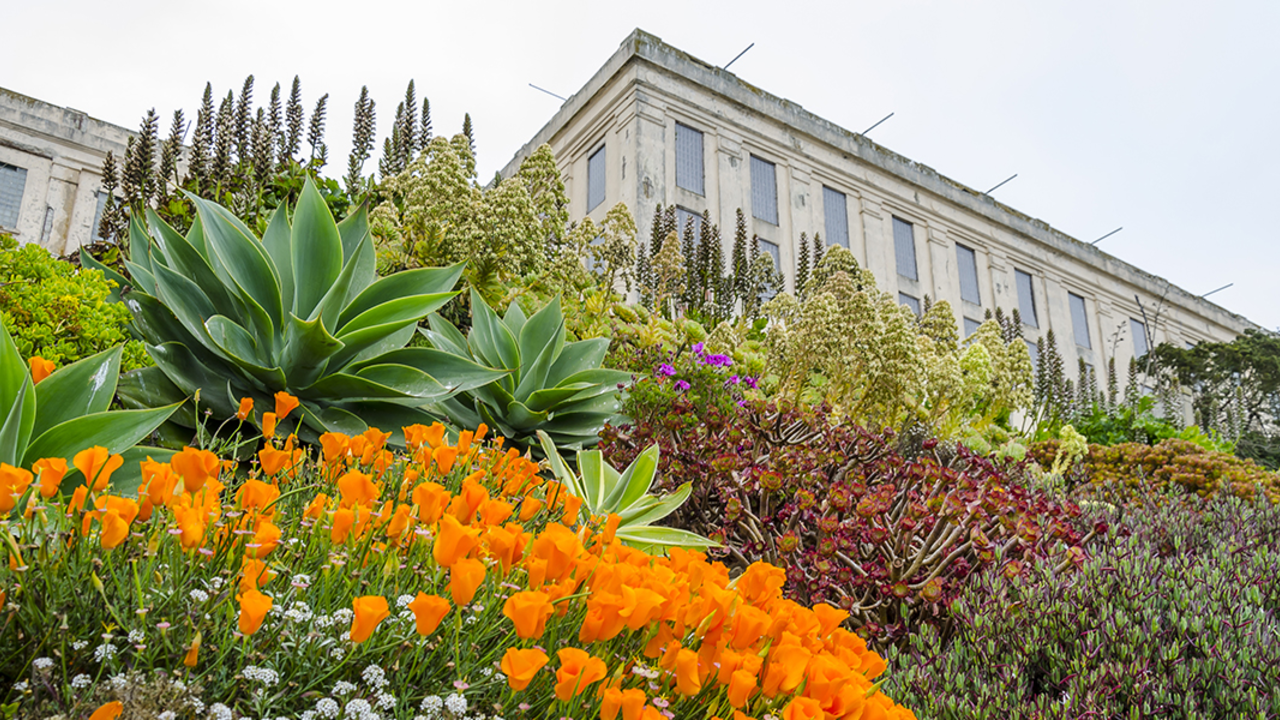
When you think of Alcatraz, what comes to mind? If you’re up on your local history or were able to visit "Red Power on Alcatraz: 50 Years of Perspectives" in 2019 or the early months of 2020, you might think of the 19-month Indians of All Tribes island occupation. This revolutionary event preceded Alcatraz’s inclusion in the Golden Gate National Recreation Area as a protected National Historic Landmark.
If you’re one of the 40 or so drop-in volunteers who regularly traveled to the island before coronavirus struck, you might think of compost piles, hillside gardens, terraces, and the way weeds and vines can grow into the street if you let them get out of control.
For two months this year following the shelter-in-place order, the five gardens at Alcatraz remained untended and wild. In May, Shelagh Fritz, the Senior Program Manager who supervises the gardens and the volunteer program on the island, was able to board an open-air barge safely carrying approved staff to perform some essential work.
“The gardens only have so much time before they start growing out,” Shelagh said. “Some plants have turned a little crispy, but others are fine. It just looks messy which, normally, would never happen, things are tended to right away.”
The essential work required of the island gardens is maintenance, including cutting and clearing plants like ivy and chasmanthe which, untended, can overtake other greenery.
In popular culture, Alcatraz’s history as a military penitentiary looms large. Remnants of this era can be seen everywhere on the island and are toured by hundreds of thousands of people during a normal year. But an interesting legacy blossoms all around the island too, reaching its colorful peak in the spring and early summer. It’s the Alcatraz gardens—the roses, irises and native plants like coyote brush and lupine, to name just a few of the island’s plant occupants.
First planted and designed during Alcatraz’s years as a military fortress from 1850-1933, the gardens were a part of an island “beautification process.” Hundreds of trees and shrubs were planted alongside the native shrubs and grasses that grew along the main road and, later, Officers’ Row. Over the years, these gardens fell into disrepair.
In 1933, the management of Alcatraz Island transferred to the Federal Bureau of Prisons. It was then that Fred Reichel, the secretary to the warden, adopted the maintenance of the gardens as his own project. With the warden’s permission, he was able to include incarcerated people on Alcatraz to continue the garden work.
“The gardens are purely there because people intentionally planted them,” said Shelagh. Even now, the gardens are maintained through deliberate, manual labor. “It’s all manual watering, there isn’t an automatic irrigation system. I have to set a timer and keep turning them on.”
Elliott Michener, one incarcerated person on Alcatraz, spent nine years rehabilitating the gardens left behind by the military officers. He led the transformation of the western slope of the island into a series of gardens and even returned to Alcatraz to visit the gardens after his release.
In 1972, years after the penitentiary closed, the island became a part of the National Park Service and in 2003, NPS and the Golden Gate National Parks Conservancy began the process of restoring the gardens, once again, to their former glory. You can see the flower gardens today on Officers’ Row just outside of the cellhouse as well as the lavender cellhouse slope—which was originally planted by the military.
Michener’s most poignant work can be found at the end of West Road, where he built terraces, a greenhouse and even a bird bath. This location, below the recreation yard, is the only garden that many incarcerated people on Alcatraz were able to see.
“We’re always improving what the gardens are,” says Shelagh. “Right now it’s about bringing in the community, engaging the gardens as a teaching classroom, getting people interested in them and acknowledging the history.”
As stewards of the land, our essential work is to maintain and care for not just our park sites, but the histories they represent. Like watering plants and trimming back weeds, this is deliberate daily work and an essential part of making sure our parks have a place in the future.

